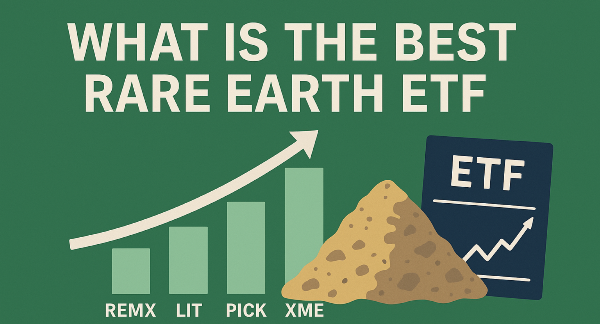Introduction
Dividend stocks are shares of companies that distribute a portion of their earnings to investors, providing a steady income stream in addition to potential capital appreciation. High-yield dividend stocks, which offer above-average dividend payouts, are particularly appealing to income-focused investors seeking to maximize returns. Investing in these stocks requires careful evaluation of key factors, including dividend sustainability, company financial health, and overall market conditions. Understanding these elements can help investors build a portfolio that balances income generation with long-term stability.
Understanding Dividend Yields
Dividend yield is a key metric used by investors to assess the income potential of a stock. It is calculated by dividing the annual dividend per share by the stock's current market price, then multiplying by 100 to express it as a percentage. A higher dividend yield indicates that a stock provides greater returns relative to its price, but investors must also consider the company’s ability to maintain these payments over time. Sustainable yields often come from financially stable firms with consistent earnings growth. High-yield dividend stocks may seem attractive due to their substantial payouts, but not all high yields indicate financial strength. Some stocks have temporarily inflated yields due to declining share prices rather than strong business fundamentals.
While high-yield stocks can enhance portfolio income, they also carry risks. Companies offering excessive dividends may struggle during economic downturns or when facing financial instability, leading to dividend cuts or suspensions. Chasing high yields without considering the underlying fundamentals can expose investors to potential capital losses.
Types of Big Dividend Stocks
Blue-chip dividend stocks are well-established companies with a history of financial stability and consistent dividend payments. These firms typically have strong balance sheets, steady revenue streams, and a long track record of rewarding investors through dividends. Due to their reliability, blue-chip stocks are a popular choice for income-focused investors seeking steady returns. While their dividend yields may not be as high as riskier alternatives, they are able to sustain payouts during economic downturns.
Real estate investment trusts (REITs) offer another avenue for investors looking for high dividend yields. These companies own, operate, or finance income-generating real estate and are required by law to distribute a significant portion of their taxable income as dividends. Also, master limited partnerships (MLPs) and business development companies (BDCs) provide additional opportunities for dividend-focused investors.
Evaluating Dividend Stocks
Evaluating dividend stocks requires a careful analysis of key financial metrics to ensure long-term sustainability. One of the most critical indicators is the payout ratio, which measures the percentage of a company’s earnings allocated to dividend payments. A lower payout ratio suggests that the company retains enough earnings to reinvest in growth, making future dividends more secure. Conversely, high payout ratios may struggle to sustain dividends during economic downturns, while those with moderate ratios tend to offer more stability.
Earnings growth is equally important, as firms with consistently rising profits are more likely to support dividend increases. Dividend aristocrats and kings exemplify long-term stability in dividend investing. Dividend aristocrats are companies that have increased their payouts for at least 25 consecutive years, demonstrating resilience through various market cycles.
Best Big Dividend Stocks to Consider
Dividend stocks provide investors with a reliable income stream, and selecting the best options requires evaluating their historical performance and consistency. Leading dividend-paying stocks span various sectors, including healthcare, energy, consumer goods, and financial services. Comparing historical performance and dividend consistency is crucial when assessing dividend stocks. Firms with a track record of increasing dividends over time, such as dividend aristocrats and kings, tend to offer more reliability.
Each sector presents unique advantages and risks for dividend investors. Energy stocks, such as ConocoPhillips, offer high yields but can be volatile due to fluctuating oil prices. Consumer goods companies, like Mondelez International, provide stable dividends but may experience slower growth. Financial stocks, including Oneok, can deliver strong returns but are sensitive to interest rate changes. Balancing sector exposure and selecting companies with durable dividends can help investors build a resilient income-generating portfolio.
Dividend Investing Strategies
Dividend reinvestment plans (DRIPs) allow investors to automatically reinvest their dividend earnings into additional shares of the same company. This strategy enhances compounding returns, as reinvested dividends generate more dividends over time. By continuously purchasing shares, investors can accelerate portfolio growth without needing to allocate additional capital. Diversification is essential in dividend investing to reduce risk and enhance stability.
Spreading investments across different sectors, such as healthcare, energy, and consumer goods, ensures that a portfolio remains resilient during market fluctuations. Balancing dividend yield with growth potential is a key consideration for investors.
Tax Implications of Dividend Investing
Dividends are taxed differently depending on the type of investment account in which they are held. In taxable brokerage accounts, dividends are subject to federal and state income taxes, with rates varying based on whether they are classified as qualified or ordinary dividends. Qualified dividends receive preferential tax treatment, typically taxed at long-term capital gains rates, while ordinary dividends are taxed at standard income tax rates. However, dividends earned within tax-advantaged accounts, such as IRAs or 401(k)s, may be deferred or exempt from taxation until withdrawals are made. Investors can employ several strategies to minimize tax burdens on dividend income.
Holding dividend-paying stocks in tax-advantaged accounts can help defer or eliminate taxes on earnings. Additionally, focusing on qualified dividends rather than ordinary dividends can reduce tax liabilities, as they are taxed at lower rates. Also, tax-loss harvesting where investors sell underperforming assets to offset taxable gains. Understanding the distinction between qualified and ordinary dividends is crucial for tax-efficient investing.
Risks and Challenges
High-yield dividend investing can be appealing, but it comes with notable risks. One common pitfall is chasing stocks with excessively high yields without assessing their financial stability. A high dividend yield may indicate a struggling company whose stock price has dropped significantly, rather than a strong business with sustainable payouts. Additionally, companies offering unusually high dividends may face financial pressure, leading to dividend cuts or suspensions. Economic cycles play a crucial role in dividend payouts, as companies adjust their distributions based on financial performance and market conditions.
Sectors such as energy and financial services are particularly sensitive to economic fluctuations, making dividend stability a key consideration. Diversification across different sectors and companies helps reduce exposure to dividend cuts. Conducting thorough research and focusing on companies with strong financial fundamentals ensures a balanced approach to dividend investing.
Conclusion
Investing in big dividend stocks can be a rewarding strategy for generating steady income and long-term growth. By understanding key factors such as dividend yields, financial stability, sector diversity, and tax implications, investors can make informed decisions that balance high returns with risk management. While high-yield stocks may seem attractive, careful evaluation of payout ratios, economic cycles, and sustainability is essential to avoid pitfalls.
A well-structured portfolio that includes dividend aristocrats, reinvestment strategies, and sector diversification can provide resilience against market fluctuations. With a thoughtful approach, dividend investing can be a powerful tool for wealth building and financial security.




























Introduction
Dividend stocks are shares of companies that distribute a portion of their earnings to investors, providing a steady income stream in addition to potential capital appreciation. High-yield dividend stocks, which offer above-average dividend payouts, are particularly appealing to income-focused investors seeking to maximize returns. Investing in these stocks requires careful evaluation of key factors, including dividend sustainability, company financial health, and overall market conditions. Understanding these elements can help investors build a portfolio that balances income generation with long-term stability.
Understanding Dividend Yields
Dividend yield is a key metric used by investors to assess the income potential of a stock. It is calculated by dividing the annual dividend per share by the stock's current market price, then multiplying by 100 to express it as a percentage. A higher dividend yield indicates that a stock provides greater returns relative to its price, but investors must also consider the company’s ability to maintain these payments over time. Sustainable yields often come from financially stable firms with consistent earnings growth. High-yield dividend stocks may seem attractive due to their substantial payouts, but not all high yields indicate financial strength. Some stocks have temporarily inflated yields due to declining share prices rather than strong business fundamentals.
While high-yield stocks can enhance portfolio income, they also carry risks. Companies offering excessive dividends may struggle during economic downturns or when facing financial instability, leading to dividend cuts or suspensions. Chasing high yields without considering the underlying fundamentals can expose investors to potential capital losses.
Types of Big Dividend Stocks
Blue-chip dividend stocks are well-established companies with a history of financial stability and consistent dividend payments. These firms typically have strong balance sheets, steady revenue streams, and a long track record of rewarding investors through dividends. Due to their reliability, blue-chip stocks are a popular choice for income-focused investors seeking steady returns. While their dividend yields may not be as high as riskier alternatives, they are able to sustain payouts during economic downturns.
Real estate investment trusts (REITs) offer another avenue for investors looking for high dividend yields. These companies own, operate, or finance income-generating real estate and are required by law to distribute a significant portion of their taxable income as dividends. Also, master limited partnerships (MLPs) and business development companies (BDCs) provide additional opportunities for dividend-focused investors.
Evaluating Dividend Stocks
Evaluating dividend stocks requires a careful analysis of key financial metrics to ensure long-term sustainability. One of the most critical indicators is the payout ratio, which measures the percentage of a company’s earnings allocated to dividend payments. A lower payout ratio suggests that the company retains enough earnings to reinvest in growth, making future dividends more secure. Conversely, high payout ratios may struggle to sustain dividends during economic downturns, while those with moderate ratios tend to offer more stability.
Earnings growth is equally important, as firms with consistently rising profits are more likely to support dividend increases. Dividend aristocrats and kings exemplify long-term stability in dividend investing. Dividend aristocrats are companies that have increased their payouts for at least 25 consecutive years, demonstrating resilience through various market cycles.
Best Big Dividend Stocks to Consider
Dividend stocks provide investors with a reliable income stream, and selecting the best options requires evaluating their historical performance and consistency. Leading dividend-paying stocks span various sectors, including healthcare, energy, consumer goods, and financial services. Comparing historical performance and dividend consistency is crucial when assessing dividend stocks. Firms with a track record of increasing dividends over time, such as dividend aristocrats and kings, tend to offer more reliability.
Each sector presents unique advantages and risks for dividend investors. Energy stocks, such as ConocoPhillips, offer high yields but can be volatile due to fluctuating oil prices. Consumer goods companies, like Mondelez International, provide stable dividends but may experience slower growth. Financial stocks, including Oneok, can deliver strong returns but are sensitive to interest rate changes. Balancing sector exposure and selecting companies with durable dividends can help investors build a resilient income-generating portfolio.
Dividend Investing Strategies
Dividend reinvestment plans (DRIPs) allow investors to automatically reinvest their dividend earnings into additional shares of the same company. This strategy enhances compounding returns, as reinvested dividends generate more dividends over time. By continuously purchasing shares, investors can accelerate portfolio growth without needing to allocate additional capital. Diversification is essential in dividend investing to reduce risk and enhance stability.
Spreading investments across different sectors, such as healthcare, energy, and consumer goods, ensures that a portfolio remains resilient during market fluctuations. Balancing dividend yield with growth potential is a key consideration for investors.
Tax Implications of Dividend Investing
Dividends are taxed differently depending on the type of investment account in which they are held. In taxable brokerage accounts, dividends are subject to federal and state income taxes, with rates varying based on whether they are classified as qualified or ordinary dividends. Qualified dividends receive preferential tax treatment, typically taxed at long-term capital gains rates, while ordinary dividends are taxed at standard income tax rates. However, dividends earned within tax-advantaged accounts, such as IRAs or 401(k)s, may be deferred or exempt from taxation until withdrawals are made. Investors can employ several strategies to minimize tax burdens on dividend income.
Holding dividend-paying stocks in tax-advantaged accounts can help defer or eliminate taxes on earnings. Additionally, focusing on qualified dividends rather than ordinary dividends can reduce tax liabilities, as they are taxed at lower rates. Also, tax-loss harvesting where investors sell underperforming assets to offset taxable gains. Understanding the distinction between qualified and ordinary dividends is crucial for tax-efficient investing.
Risks and Challenges
High-yield dividend investing can be appealing, but it comes with notable risks. One common pitfall is chasing stocks with excessively high yields without assessing their financial stability. A high dividend yield may indicate a struggling company whose stock price has dropped significantly, rather than a strong business with sustainable payouts. Additionally, companies offering unusually high dividends may face financial pressure, leading to dividend cuts or suspensions. Economic cycles play a crucial role in dividend payouts, as companies adjust their distributions based on financial performance and market conditions.
Sectors such as energy and financial services are particularly sensitive to economic fluctuations, making dividend stability a key consideration. Diversification across different sectors and companies helps reduce exposure to dividend cuts. Conducting thorough research and focusing on companies with strong financial fundamentals ensures a balanced approach to dividend investing.
Conclusion
Investing in big dividend stocks can be a rewarding strategy for generating steady income and long-term growth. By understanding key factors such as dividend yields, financial stability, sector diversity, and tax implications, investors can make informed decisions that balance high returns with risk management. While high-yield stocks may seem attractive, careful evaluation of payout ratios, economic cycles, and sustainability is essential to avoid pitfalls.
A well-structured portfolio that includes dividend aristocrats, reinvestment strategies, and sector diversification can provide resilience against market fluctuations. With a thoughtful approach, dividend investing can be a powerful tool for wealth building and financial security.